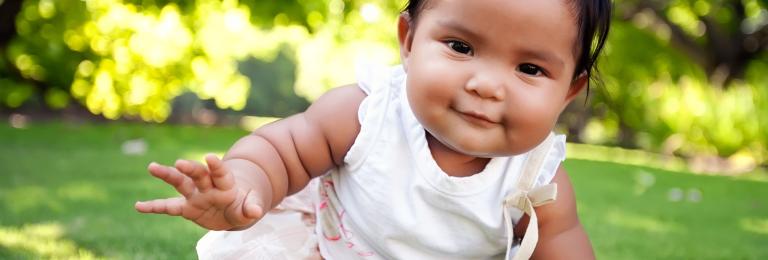Developmental milestones: 6-12 months
Developmental milestones are checkpoints in your child’s physical, cognitive and behavioural growth. It is important to be aware of certain milestones in your child's development, but it is not something that you should place intense focus on. For example, between 9 and 12 months your child should be able to walk while being supported by furniture or an adults hands. Being aware of these milestones allows you to understand if your child is on the right trajectory, or if a particular milestone may be missing or significantly delayed, then to seek professional advice.
Below is a list of major milestones that typically appear between 6 and 12 months with a focus on physical and motor development.
Physical development: 6-9 months
- Can move from tummy or back to sitting
- Able to sit steadily without help or support from arms
- Tracks objects by turning head while sitting
- May begin to crawl
- Transfers objects from one hand to another
- Can bang and shake objects
Physical development: 9-12 months
- Able to stand with support initially, and alone later
- Able to walk with use of furniture, may be able to walk alone after practice
- Uses thumb and index finger to grab small objects
- Releases objects into a container with large opening
Language development: 6-9 months
- Begins to say “mama” and “dada”
Language development: 9-12 months
- Responds to verbal prompts such as “wave bye-bye”
Social and emotional development: 6-9 months
- Plays peekaboo
Social and emotional development: 9-12 months
- Copies simple actions and other children
This information is taken from Toddler’s First Steps. For more information and a more complete list of developmental milestones, please visit HealthLink BC.
At this age some great toys for children are wooden blocks, balls, measuring spoons, tupperware and other items that are light, can roll and be stacked. When a child is able to sit independently, and later to stand, their world opens up as they are able to see and reach for more objects. At this time, language development can speed up so be sure to speak with your child about the objects in the room and what they are playing with. An example of an activity to try at this age is Discovery Baskets, where a basket or box is filled with similar style items.
